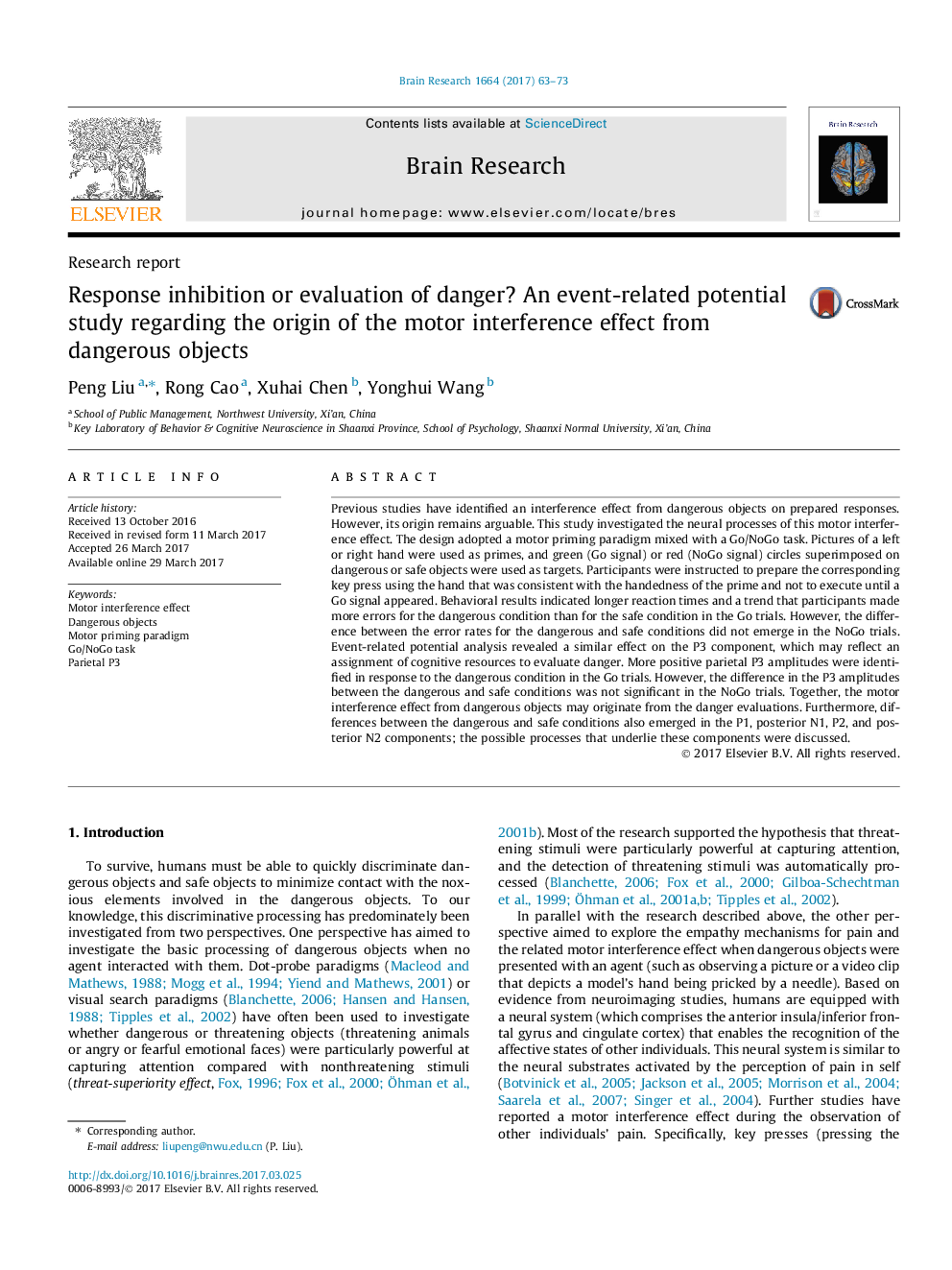| کد مقاله | کد نشریه | سال انتشار | مقاله انگلیسی | نسخه تمام متن |
|---|---|---|---|---|
| 5736608 | 1613781 | 2017 | 11 صفحه PDF | دانلود رایگان |
عنوان انگلیسی مقاله ISI
Response inhibition or evaluation of danger? An event-related potential study regarding the origin of the motor interference effect from dangerous objects
ترجمه فارسی عنوان
مهار پاسخ یا ارزیابی خطر یک مطالعه بالقوه مربوط به رویداد در مورد منشا اثر تداخل موتور از اشیاء خطرناک
دانلود مقاله + سفارش ترجمه
دانلود مقاله ISI انگلیسی
رایگان برای ایرانیان
کلمات کلیدی
موضوعات مرتبط
علوم زیستی و بیوفناوری
علم عصب شناسی
علوم اعصاب (عمومی)
چکیده انگلیسی
Previous studies have identified an interference effect from dangerous objects on prepared responses. However, its origin remains arguable. This study investigated the neural processes of this motor interference effect. The design adopted a motor priming paradigm mixed with a Go/NoGo task. Pictures of a left or right hand were used as primes, and green (Go signal) or red (NoGo signal) circles superimposed on dangerous or safe objects were used as targets. Participants were instructed to prepare the corresponding key press using the hand that was consistent with the handedness of the prime and not to execute until a Go signal appeared. Behavioral results indicated longer reaction times and a trend that participants made more errors for the dangerous condition than for the safe condition in the Go trials. However, the difference between the error rates for the dangerous and safe conditions did not emerge in the NoGo trials. Event-related potential analysis revealed a similar effect on the P3 component, which may reflect an assignment of cognitive resources to evaluate danger. More positive parietal P3 amplitudes were identified in response to the dangerous condition in the Go trials. However, the difference in the P3 amplitudes between the dangerous and safe conditions was not significant in the NoGo trials. Together, the motor interference effect from dangerous objects may originate from the danger evaluations. Furthermore, differences between the dangerous and safe conditions also emerged in the P1, posterior N1, P2, and posterior N2 components; the possible processes that underlie these components were discussed.
ناشر
Database: Elsevier - ScienceDirect (ساینس دایرکت)
Journal: Brain Research - Volume 1664, 1 June 2017, Pages 63-73
Journal: Brain Research - Volume 1664, 1 June 2017, Pages 63-73
نویسندگان
Peng Liu, Rong Cao, Xuhai Chen, Yonghui Wang,
